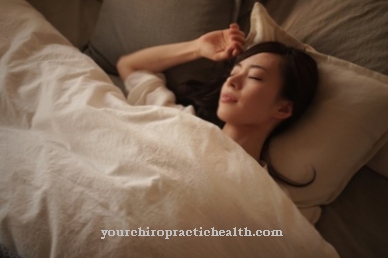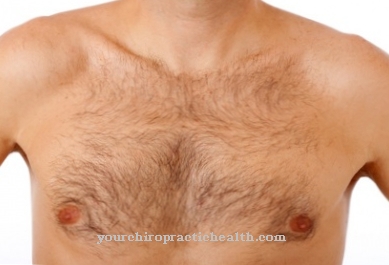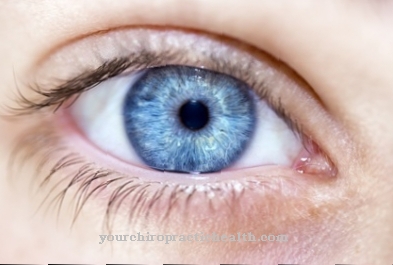In naturopathy, the treatment is the Reflex zones An option in the range of therapies on the human body that is often used for a long time. The reflex zones are networked with the internal organs. Diagnoses can be made and pain-relieving, metabolism-stimulating and healing treatments can be carried out by touching the surface of the skin.
The way in which the reflex zones are so closely connected to other areas of the body cannot yet be described in sufficient detail.
What are reflex zones?

The various forms of treatment of reflex zones on the body have been used in very different parts of the world for thousands of years. Reflexology is part of empirical medicine and folk medicine. They knew ancient cultures like those of the Incas and the Romans. The treatment of reflex zones has also played an important role in Asia since time immemorial. In Europe, the first written documents about reflex zone treatment exist from the 16th century.
The physician Dr. Fitzgerald, who lived from 1872 to 1942, was the first to collect worldwide knowledge of the reflex zones and to put them together in a clear way. The result was an image of the human body, which can be divided into ten areas from the head to the soles of the feet, which are symmetrically present in both halves of the body.
In addition to his zone concept, Fitzgerald also described the relationship between the reflex zones and other regions on and in the body and with the internal organs. This representation of the reflex zones in humans is still valid today. Today, many alternative practitioners, doctors and physiotherapists treat their patients on this basis. The treatment of the reflex zones is one of the regulation therapies.
Function & task
The self-healing powers of the organism are stimulated by touching the hands and massaging the skin areas. In total, there are around 30 systems of reflex zones that can be stimulated via the skin surface. The reflex zones on our feet and hands are best known today. But also on the ears, back and in the chest and stomach area there are therapeutically effective skin zones, which are called dermatomes or reflex zones.
Before starting a reflex zone treatment, the therapist can detect possible disorders in the function of the internal organs or the musculoskeletal system by touching the skin segments. In the case of illnesses, there are hardening of the muscles, skin changes in the respective reflex zone or the patient reacts with an inappropriate pain reaction when only light pressure is applied to the tissue under the skin. The therapists can use these deviations from the normal state for diagnostic purposes.
E.g. the whole person, with all his organs and structures, also shown on the foot. This is why numerous clinical pictures can be successfully treated with foot reflexology. Why this succeeds, as with other systems of reflex zones, cannot be satisfactorily explained with the previous scientific approach. It is probably an energetic interplay of muscles, tendons, skin and nerves, in which impulses are passed on to the diseased organs and tissues inside the body.
With the findings of Dr. Fitzgerald, the physiotherapist Eunice Ingham worked very intensively on the foot reflex zones in the middle of the 20th century. She achieved numerous successes in treating patients. Ms. Ingham wrote down her observations and findings and modified the treatment by introducing certain grip and pressure techniques in manual therapy of the reflex zones. Hanne Marquard was trained by Eunice Ingham and made foot reflexology a well-known alternative medical method in Germany.
In addition to massage, there are other forms of treatment for reflex zones. Injections with homeopathic medicines are often placed in certain skin segments, which are supposed to stimulate the body to heal itself through the networking of the reflex zones.
The painting of symbols or tattooing on the skin of one or more reflex zones was already practiced in ancient folk medicine. Tattoos of this type were found on the more than 5,000 year old glacier mummy from the Neolithic Age, which was found in the Ötztal Alps in 1991.
Illnesses & ailments
The treatment of the reflex zones in naturopathic practices is increasingly being used for a whole range of diseases. Massages and injections are common today in order to achieve therapeutic success. Even with pronounced osteoarthritis of the knee or hip, treatment can improve the mobility of the affected joints. In addition, the foot reflex zone massage is particularly suitable for relieving pain.
Reflex zone massage can stimulate the activity of the kidneys and liver, and regulate the digestive activity of the stomach, intestines, pancreas and bile. In the case of chronic bladder and urinary tract infections, stimulating the corresponding reflex zones can change the mood of the organism.
Further areas of application for reflex zone therapy are:
- Cardiovascular diseases
- Respiratory diseases
- climacteric complaints
- Inflammation
- Nerve disorders
- Reproductive system diseases
- general stimulation of the metabolism as well as purification and detoxification
In most cases, multiple applications of reflexology are necessary to achieve a lasting effect. Usually two treatments per week are scheduled. Anyone who is interested in the reflex zones and the possibilities of alleviating and curing diseases through these areas of the skin can read up on and apply treatments on the foot for themselves and family members. Children in particular react very directly to the massage of the corresponding reflex zones when they have health problems.




.jpg)






















